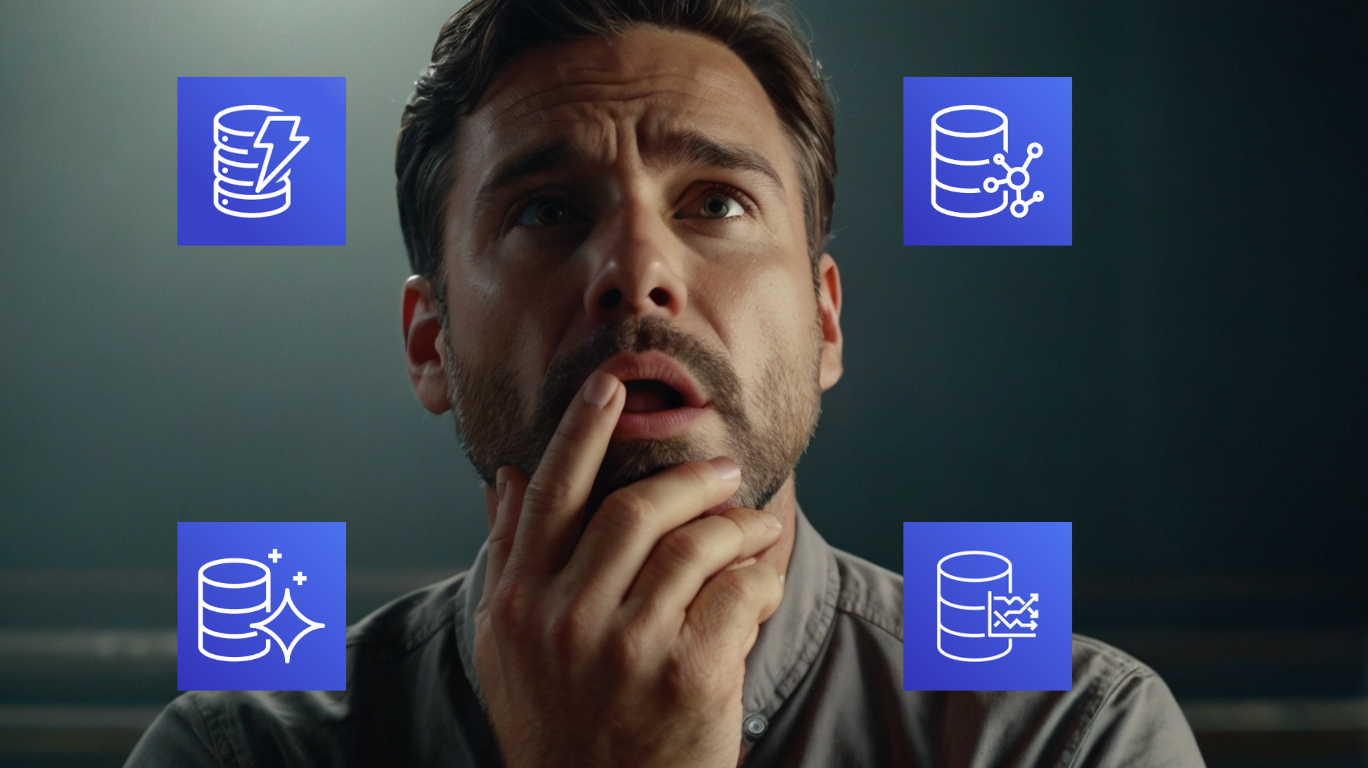Choosing the right AWS Database Service
 Rishabh Gupta
Rishabh Gupta
Selecting the optimal database for your application is a critical decision that can significantly impact performance, scalability, cost, and overall system architecture. Let's delve deeper into the factors to consider when making this choice.
Understanding Your Data and Workload
Data Model:
Relational: Structured data with defined schemas, ideal for complex queries and transactions (e.g., customer information, order details).
NoSQL: Flexible schema for unstructured or semi-structured data, suitable for large volumes of data and high write throughput (e.g., user profiles, log data).
Key-Value: A simple data model where data is stored as key-value pairs is efficient for high-performance read/write operations (e.g., caching, session data).
Graph: Represents data as nodes and edges, ideal for analyzing relationships between entities (e.g., social networks, fraud detection).
Time-Series: Stores time-stamped data, optimized for fast ingestion and querying time-based patterns (e.g., IoT sensor data, financial data).
Ledger: Immutable and cryptographically verifiable transaction logs, used for blockchain-based applications.
Workload:
Transactional: Frequent updates, inserts, and deletes (e.g., online shopping carts, banking transactions).
Analytical: Complex queries and aggregations over large datasets (e.g., business intelligence, data warehousing).
Hybrid: Combination of transactional and analytical workloads.
Scalability and Performance Requirements
Data Volume: How much data will you store?
Growth Rate: How quickly will your data grow?
Read/Write Ratio: What is the balance between read and write operations?
Latency: How quickly do you need to access data?
Throughput: How much data can be processed per unit of time?
Concurrency: How many concurrent users or processes will access the database?
Cost Considerations
Upfront Costs: Hardware, software, and licensing fees.
Operational Costs: Database administration, maintenance, and monitoring.
Storage Costs: Cost per gigabyte of data stored.
Compute Costs: Cost for processing data.
Networking Costs: Data transfer costs.
Management Overhead
Database Administration: Do you have the expertise to manage the database?
Backup and Recovery: How will you back up your data and recover from failures?
Security: How will you protect your data from unauthorized access?
Performance Tuning: Do you have the skills to optimize database performance?
Additional Factors
Data Consistency: How important is it that data is always consistent?
Data Availability: How important is it that data is always accessible?
Data Durability: How important is it that data is not lost?
Compliance: Does the database meet industry regulations (e.g., HIPAA, GDPR)?
Decision-Making Process
Define Requirements: Clearly articulate your application's needs and constraints.
Evaluate Options: Research different database services and compare their features, performance, and cost.
Prototype and Test: Build prototypes to validate your choice and identify potential issues.
Monitor and Optimize: Continuously monitor database performance and make necessary adjustments.
Conclusion
AWS offers a robust suite of database services to accommodate a wide range of application needs.
By carefully considering factors like data model, workload, scalability, performance, cost, and management overhead, organizations can select the optimal database solution to drive their business objectives. From high-performance relational databases to flexible NoSQL options, AWS provides the tools to manage data efficiently and effectively. Ultimately, the key to success lies in understanding your specific requirements and leveraging AWS's comprehensive database portfolio to build scalable and resilient applications.
Any personal insights and/or experiences shared in the comments are greatly appreciated and encouraged!
Bravo! You’ve made it to the end. Now, before you leave:
Subscribe to my newsletter
Read articles from Rishabh Gupta directly inside your inbox. Subscribe to the newsletter, and don't miss out.
Written by
